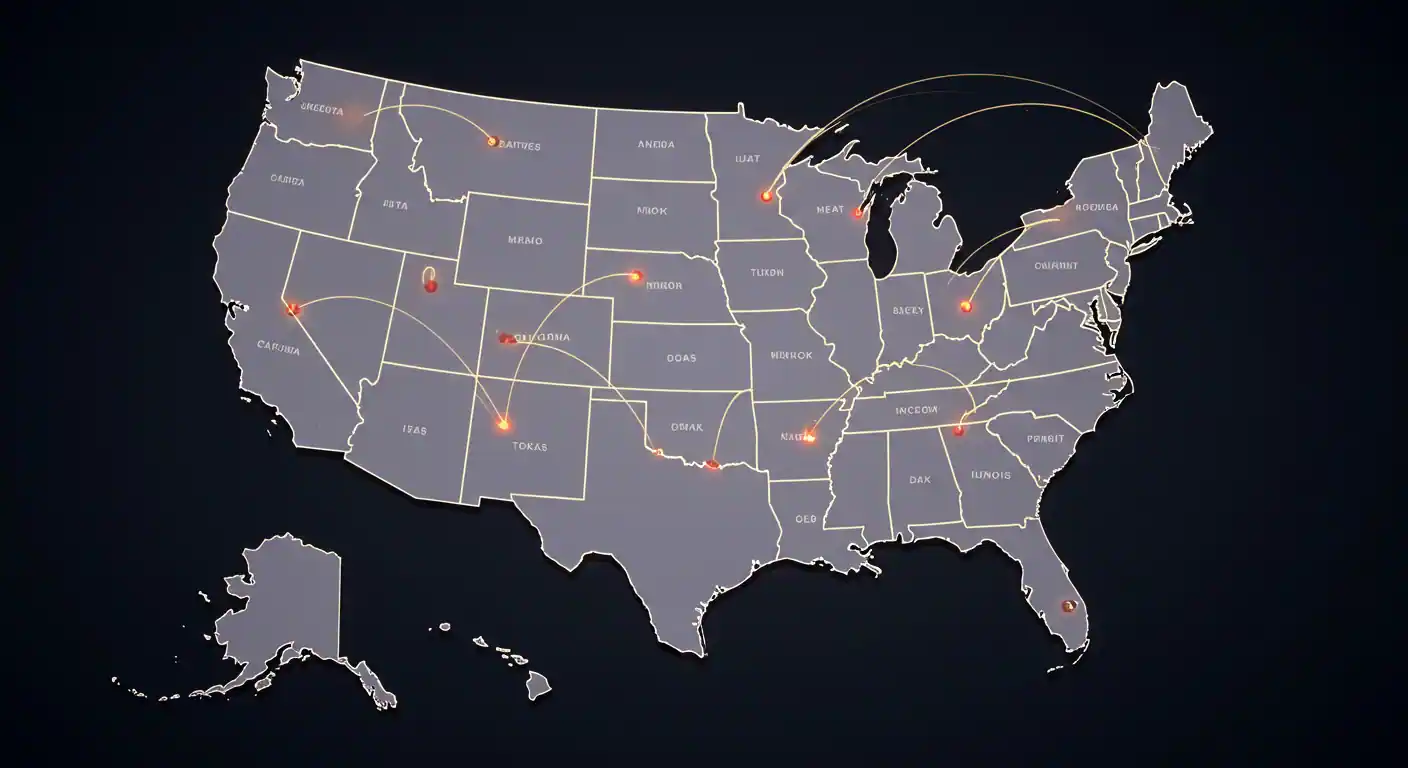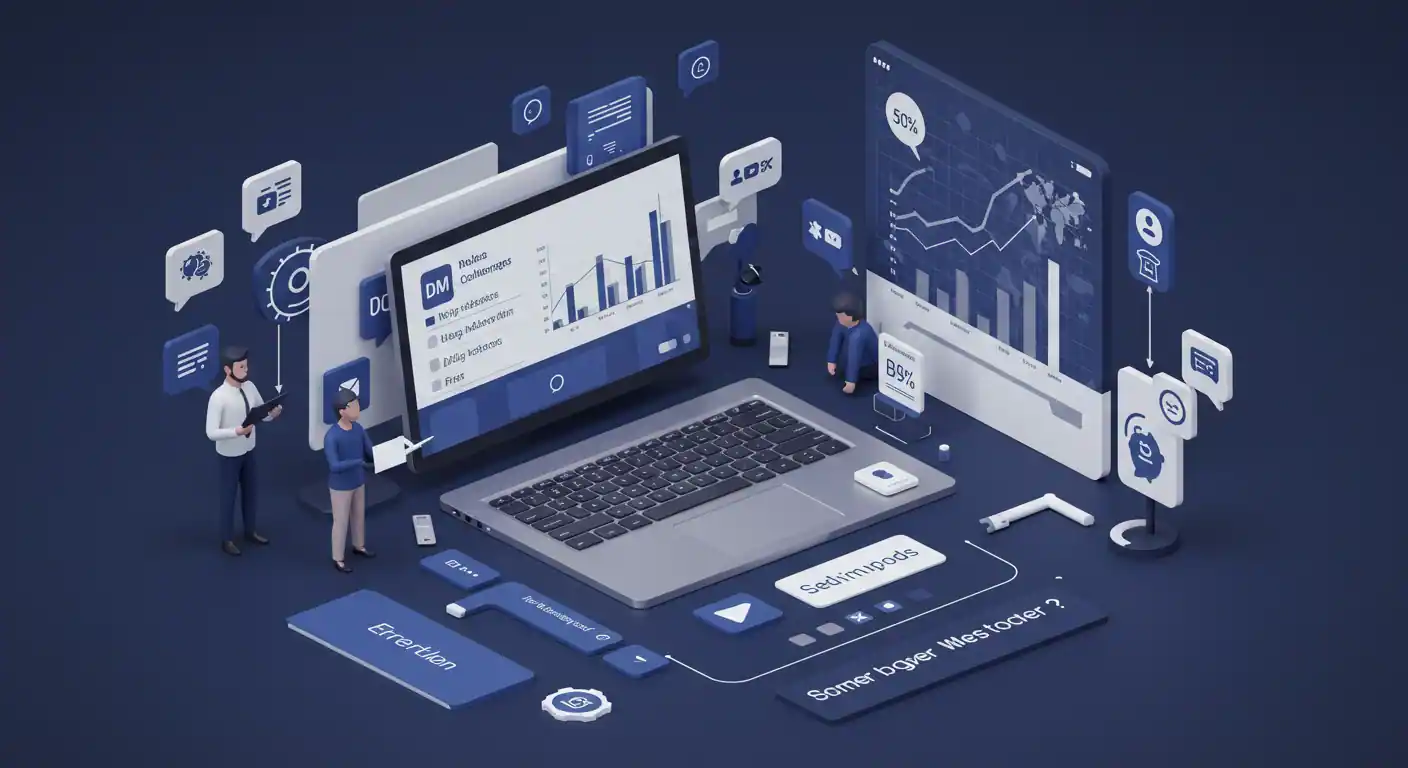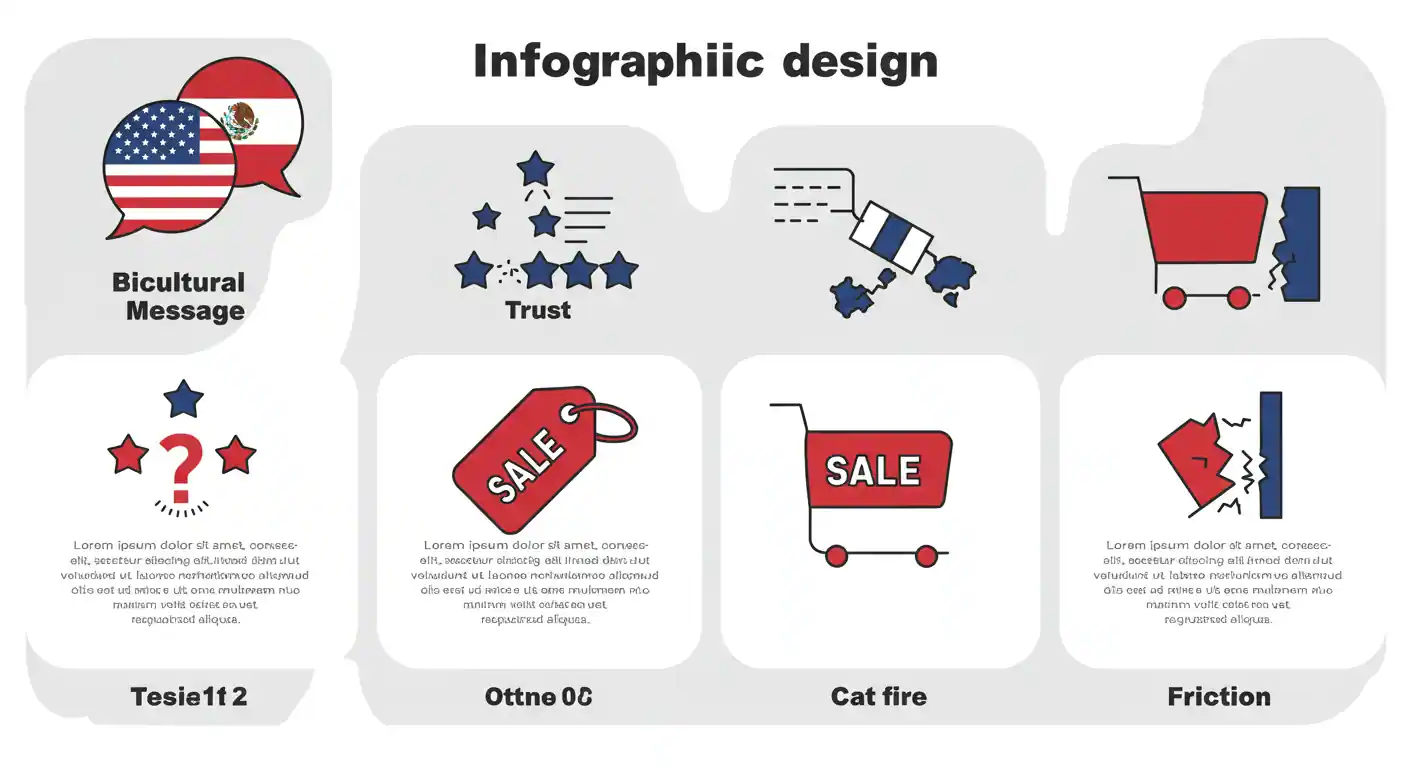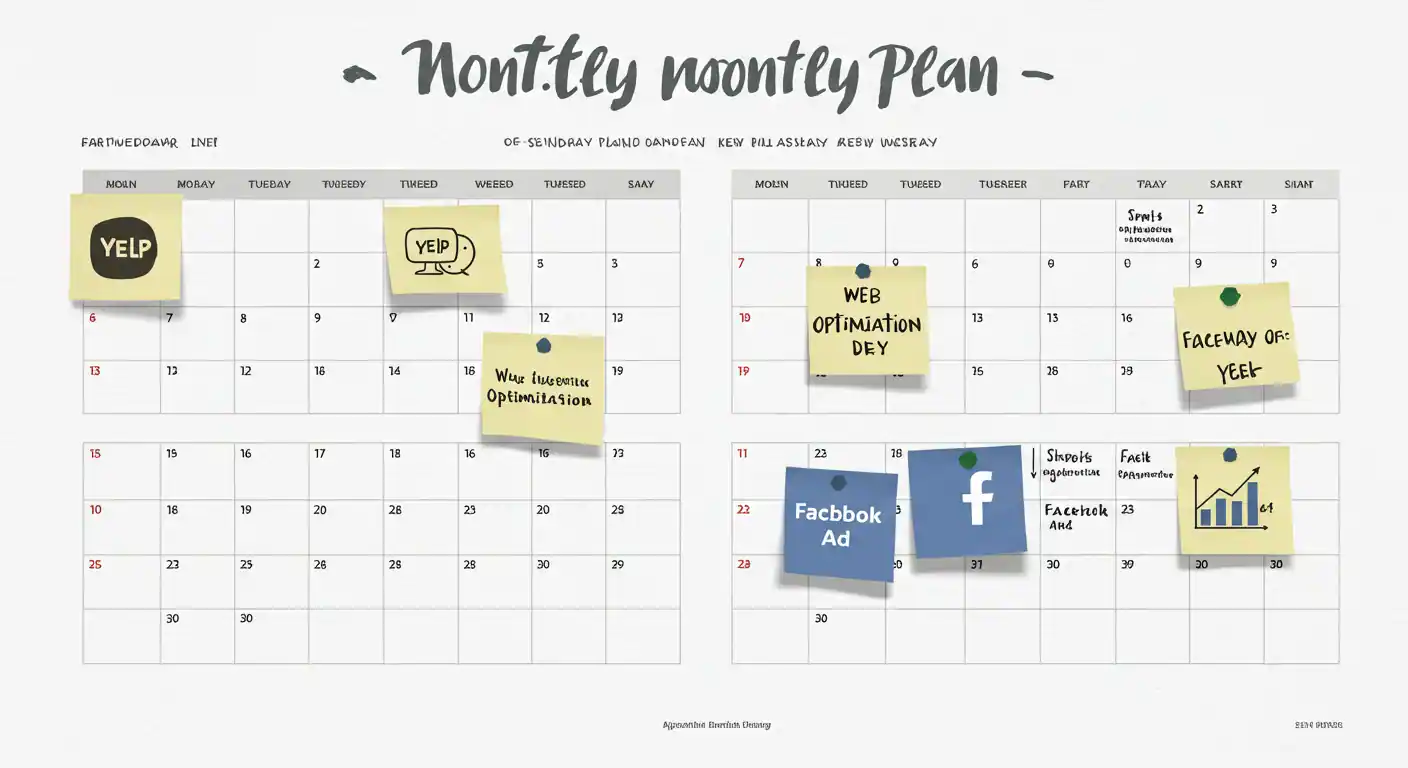Small Business Not Selling? Here’s Why
A Complete Sales Diagnostic for US Small Businesses (Plus the 30-Day Fix)

You’re grinding 60+ hour weeks, managing inventory, dealing with suppliers, and handling customer service. But despite all your hustle, your revenue is stuck. If you’re asking yourself “Why isn’t my small business selling?” in today’s competitive US market, you’re not alone. This is the reality for thousands of small business owners across America.
The answer isn’t always “I need more Facebook ads”. More often, it’s a strategic issue that’s quietly bleeding your potential profits. At MiNegocioTop.com, we’ve analyzed hundreds of struggling small businesses and discovered the patterns. This diagnostic guide will help you identify the specific bottlenecks killing your sales and give you a 30-day action plan to start seeing real results.
The $6.2 Trillion Opportunity: Why Small Business Sales Diagnostics Matter

Small businesses drive 99.9% of US businesses and 47.3% of private workforce employment. Your success matters to the economy.
Small businesses contribute $6.2 trillion annually to the US economy, but 20% fail within the first year, and 50% within five years. The difference between thriving and closing isn’t usually the product—it’s the sales process.
A proper sales diagnostic helps you:
- Identify Revenue Leaks: Find where potential customers are dropping out of your sales funnel, whether it’s your Google Business profile, your website, or your checkout process.
- Optimize for Local Search: 76% of people who search for something nearby on their phone visit a business within a day. Are you capturing this traffic?
- Build Trust Signals: American consumers rely heavily on reviews, professional websites, and clear pricing. Missing these signals costs you sales daily.
- Compete Against Big Box: While you can’t match Walmart’s prices, you can deliver personalized service and local expertise that creates loyal customers.
Take Action NOW: Diagnose Your Sales Bottleneck

Answer honestly to discover where your revenue growth is getting stuck.
Use this interactive tool to get your first rapid diagnostic. Your honest answers will help identify your biggest opportunity area for revenue growth.
1. What best describes your main challenge right now?
2. If a potential customer visits your business (online or physical), do they understand in 5 seconds why you’re better than competitors?
3. How easy is it for customers to pay you?
The 4 Sales Killers Hurting US Small Businesses (And How to Fix Them)

99% of small business sales problems trace back to one or more of these four critical errors.
Based on our analysis of struggling US small businesses, these are the most common root problems killing sales.
Weak Value Proposition: “We’re the Best” Isn’t Enough
The Problem: Your messaging is generic. “Best quality, great prices” doesn’t differentiate you from the 50 other businesses saying the same thing on Google.
Why It Matters: American consumers have endless options. Without a clear reason to choose YOU specifically, they’ll pick whoever seems “good enough” or cheapest.
- Get Specific: Instead of “best pizza,” be “Chicago deep-dish pizza made with Wisconsin cheese” or “the only pizzeria in downtown that delivers until 2 AM.”
- Lead with Outcomes: “We help busy parents get dinner on the table in 15 minutes” beats “fast food.”
- Immediate Action: Rewrite your Google Business description and homepage headline to focus on your unique advantage.
Review Desert: No Social Proof = No Trust
The Problem: You have few or no reviews on Google, Yelp, or Facebook. Even worse, you’re not actively asking satisfied customers for reviews.
Why It Matters: 93% of US consumers read online reviews before making a purchase decision. No reviews = no credibility in American consumers’ minds.
- Review Generation System: Create a simple process to ask every happy customer for a review. Use QR codes, follow-up emails, or text messages.
- Multi-Platform Strategy: Get reviews on Google (for search), Yelp (for discovery), and Facebook (for social proof).
- Immediate Action: Send a personal message to your 10 best customers today asking for a Google review. Make it easy with a direct link.
Pricing Confusion: Too High, Too Low, or Just Unclear
The Problem: Your pricing strategy doesn’t match what American consumers expect for your category, or worse, potential customers can’t figure out what things cost.
Why It Matters: Price transparency builds trust. Hidden or confusing pricing creates friction. Price positioning communicates quality expectations.
- Transparent Pricing: Display clear prices on your website and in-store. Use “starting at” for custom services.
- Value Anchoring: Create good/better/best packages so customers can self-select their comfort level.
- Immediate Action: Research 3 direct competitors’ pricing and position yourself strategically – either clearly cheaper or clearly premium with justification.
Checkout Friction: Making It Hard to Give You Money
The Problem: Your purchase process has too many steps, asks for unnecessary information, or doesn’t work well on mobile phones.
Why It Matters: American consumers expect Amazon-level convenience. Every extra click or form field increases abandonment rates.
- Mobile-First: 60% of US online traffic is mobile. Your entire purchase process must work flawlessly on smartphones.
- Payment Options: Accept credit cards, PayPal, Apple Pay, Google Pay. Consider buy-now-pay-later options like Affirm or Klarna.
- Immediate Action: Test your checkout process on your phone right now. Time it. If it takes more than 2 minutes, simplify it.
Your 30-Day Strategic Action Plan

Clarity without action is useless. This is your roadmap for the next month.
Based on your diagnostic results, here’s your suggested action plan. Pick the track that aligns with your biggest bottleneck.
| If your problem is… | Week 1: Analysis | Week 2: Quick Wins | Week 3: Implementation | Week 4: Measurement |
|---|---|---|---|---|
| VISIBILITY | Research 10 local keywords. Optimize your Google Business Profile 100%. Claim your Yelp listing. | Write and publish your first blog post answering a common customer question. Update all business directory listings. | Launch a test Google Ads campaign ($200 budget) targeting local customers searching for your services. | Analyze Google Analytics traffic sources. Which brought the most qualified visitors? Double down on what works. |
| TRUST/CONVERSION | Survey 5 recent customers about why they chose you. Identify your real competitive advantages. | Rewrite your homepage headline and add customer testimonials. Get SSL certificate if you don’t have one. | Create a compelling offer (bundle, guarantee, or bonus) and promote it across all channels. | Track conversion rates before/after changes. Survey new customers to confirm messaging resonates. |
| PURCHASE FRICTION | Audit your entire purchase process. Test checkout on mobile. Research payment processor options. | Simplify contact forms (3 fields max). Speed up website using Google PageSpeed Insights recommendations. | Implement new payment options. Create lead magnet (free guide/checklist) to capture email addresses. | Monitor cart abandonment rates and form completion rates. A/B test checkout improvements. |
From the Trenches: What Actually Works in US Small Business Sales
Tip 1: Local SEO Is Your Secret Weapon
46% of all Google searches are looking for local information. Optimize for “near me” searches by maintaining accurate NAP (Name, Address, Phone) across all directories, getting local citations, and creating location-specific content.
Tip 2: Reviews Are Modern Word-of-Mouth
Automate review requests with tools like Podium, BirdEye, or even simple follow-up emails. Respond to ALL reviews (positive and negative) professionally. This shows future customers you care about service quality.
Tip 3: Use AI to Understand Customer Sentiment
Ask ChatGPT: “Analyze these 25 customer reviews and identify the top 3 reasons people choose my business and the top 3 complaints.” Use insights to refine your messaging and fix real problems.
Tip 4: Your Story Sells
Americans love supporting businesses with compelling origin stories. Whether you’re a veteran-owned shop, family business, or local entrepreneur who started in their garage, tell that story everywhere – website, social media, and sales conversations.
Common Questions About Small Business Sales Problems
Generally no. Compete on convenience, expertise, personalized service, and local connection instead. Example: A hardware store can’t beat Home Depot’s prices, but they can offer expert advice, same-day delivery, and solutions for unusual problems.
Track your conversion rates. If you’re getting website traffic or foot traffic but few sales, it’s likely a trust, pricing, or product issue. If you’re getting very little traffic or inquiries, focus on marketing and visibility first.
You need both, but a professional website builds more credibility. 75% of consumers judge a company’s credibility based on website design. Facebook is great for engagement and community building, but your website is your digital storefront.
Your Next Step: From Diagnosis to Revenue Growth
You no longer have to guess why your small business isn’t selling as well as it could. With this diagnostic guide, you have a systematic approach and a clear 30-day action plan to address the root causes holding back your revenue.
Choose the error that’s most affecting your business, implement the 30-day plan, and start measuring results. Sustainable growth comes from informed action, not random tactics.
If you need help implementing these strategies, improving your online presence, and building systems that consistently generate sales, we can be your strategic partner in growing your American small business.
Ready to Transform Your Small Business?
Stop leaving money on the table. The US market rewards businesses that understand their customers and remove barriers to purchase.
